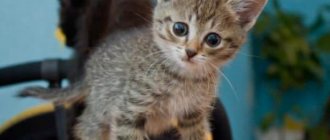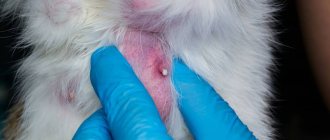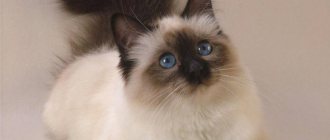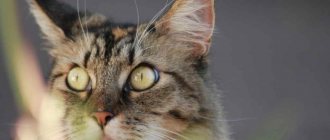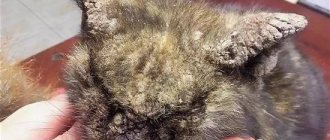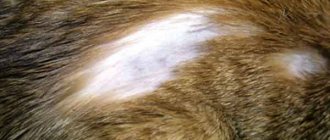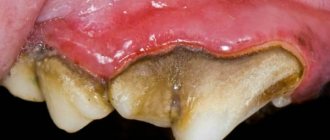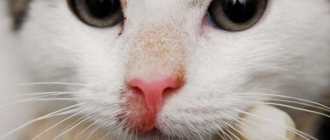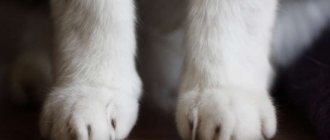Rickets in kittens is a growing disease. It occurs due to metabolic disorders and a lack of vitamins vital for the healthy and full development of the body. This is a serious and dangerous disease that can lead to serious functional impairment.
It affects not only the kitten’s skeletal system, but also generally affects the development of its body. That is why treatment of rickets must be comprehensive and professional. Here you can find out all the most important things about the causes of rickets in kittens, its signs and methods of treatment.
See this article:
Causes of the disease Signs of rickets in kittens How to make a diagnosis? Treatment of rickets What should be the diet for rickets? Disease prevention
What is rickets
Rickets is a disease that results in metabolic disorders and insufficient amounts of calcium, phosphorus and vitamin D.
The result of a neglected condition can be a curvature of the spine in animals, incorrect shape of the paws, as well as serious disruption of the structure of internal organs. And this can already lead to serious consequences for the cat’s life.
This disease is easily corrected in the early stages, so it is advisable to examine kittens from the moment of birth for signs of rickets.
Laboratory diagnostic methods
Rickets in cats is diagnosed at the stage of mild symptoms, for which blood is taken from the animal for biochemistry and general analysis. The pathology will be observed in a significant decrease in calcium and phosphorus, a significant increase in alkaline phosphatase, and a decrease in blood clotting.
When making a diagnosis, the veterinarian prescribes an x-ray, which should show bone loss, curvature, thickening and deformation in the vertebral region and chest. A radioisotope study will also show all changes in the skeleton.
Systemic disorders can be diagnosed using abdominal ultrasound and electrocardiogram.
Hyperparathyroidism is very similar to rickets, i.e. dysfunction of the parathyroid gland. This disease also affects muscle tissue and the hepatorenal system. An ECG and ultrasound will show the difference.
How to diagnose rickets
At the age of two weeks, you can see the first symptoms - a kitten with rickets is weak, develops worse, and is less active. Dull fur can be a serious “red flag” in diagnosing the disease at an early stage.
In addition, rickets can be associated with the presence of loose stools and vomiting in the baby.
As the disease progresses, lameness appears and the kitten staggers when walking. The back and legs may become noticeably curved and the joints may expand. In severe cases, the abdomen swells greatly, which can negatively affect the development of internal organs.
If you suspect at least one symptom of rickets in a kitten, contact your veterinarian immediately, since the sooner the diagnosis is confirmed, the easier it will be to cure it.
Often, to confirm the diagnosis, it is necessary to do an X-ray examination or take a biochemical blood test.
Disease prevention
Rickets is a dangerous and serious disease. Simple preventive measures will help prevent its development. And the very first of them concern the reproduction of kittens. Approach this process responsibly: limit mating of sick individuals, monitor the number of pregnancies in the cat, and provide her with a balanced diet.
Other recommendations for the prevention of rickets:
- Ensure normal temperature and humidity in the room where the kittens live. Don't forget to ventilate it regularly.
- Make sure there is plenty of sunlight entering the room. This will ensure the normal development of the kittens’ body.
- If you need to switch to artificial milk substitutes, then give preference to high-quality mixtures. If possible, consult your veterinarian first.
- Don't wean kittens off milk too early. The optimal age for this is 2.5-3 months.
- Keep your veterinary appointments on time. As prescribed by a specialist, give kittens vitamins and mineral complexes.
- And one more nuance - choose the best toys for your pets so that they move and play more.
Rickets is a dangerous disease. Without treatment, it will lead to serious consequences, including severe bone deformation, exhaustion of the body, inflammation of the joints and dysfunction of internal organs.
The sooner you seek help from a veterinarian, the sooner your kitten can return to a healthy life!
Reasons for development
Before you figure out how to treat rickets in kittens, you need to resort to the reasons for its occurrence.
Since rickets is formed as a result of insufficient amounts of necessary substances, the main reason is an insufficiently balanced diet in the cat during pregnancy and after childbirth.
But rickets can be caused by other reasons:
- violation of the rules of breeding and crossing
- too frequent mating - more than once a year
- failure to maintain sanitary standards - lack of sun, poor ventilation
- gastrointestinal diseases
- unbalanced diet when separated from mother
Artificial feeding can also cause a lack of elements necessary for the body, especially if instead of mother's milk the kitten receives an industrial substitute.
If your pet is forced to feed artificially, then you need to turn to special mother’s milk substitutes for kittens, the composition of which is selected taking into account the needs of the small organism.
Infant formula is also not suitable, since it is designed for human needs and can only cause harm due to an overabundance of minerals.
Symptoms
In the initial stages, rickets does not manifest itself in any way. There may be a slight decrease in activity, the coat becomes dull, softening of the stool and diarrhea are possible.
Over time, symptoms worsen and bone changes become noticeable.
- Characteristic appearance - the kitten is very thin, with a large and inflated belly.
- Noticeable growth lag compared to peers.
- Thickening of the articulation of the bone and cartilaginous tissues of the ribs - “rosary”, noticeable when stroking the sides, felt like balls on the ribs.
- Bracelets are thickenings of the ends of tubular bones on the limbs.
- Changes in the spine - noticeable sagging of the back.
- Teeth replacement occurs slowly and later than expected.
- Irregularities are noticeable on the paws; later, their curvature and lameness may appear.
- Excessively increased appetite.
The longer the deficiency state lasts, the more the disease worsens. The kitten becomes very thin due to atrophied muscles, weak, lies all the time and is reluctant to move. Spontaneous fractures or ligament ruptures are possible. When there are disturbances in the muscles, cramps begin.
Treatment and supportive care
Depending on the stage and form of the disease, treatment for rickets may differ for each kitten.
However, any treatment is aimed at restoring metabolism - supplying the body with a sufficient amount of calcium, phosphorus, vitamin D. The dosage is calculated individually by a specialist, so you should not self-medicate.
Seizures in cats - main causes, symptoms, first aid, treatment and choice of drugs (110 photos)Polycystic kidney disease in cats - causes, diagnosis and symptoms of the disease. Treatment options and prevention of kidney disease (95 photos)
Tartar in cats - signs of the disease and methods of fully treating tartar (125 photos + video)
In addition to the main therapy, sometimes a kitten additionally requires restoration of other body systems and the veterinarian may prescribe:
- preparations for restoring the gastrointestinal tract (pharmacy or flax decoction);
- chondroitin for joint restoration (if age allows, you can give fish cartilage products high in this substance)
- drugs for the cardiovascular system (eg, caffeine sodium benzoate)
- general strengthening drugs (for example, Eleutherococcus extract - a drug of natural origin that helps normalize metabolism)
The degree of development of the disease will also determine how long the treatment of rickets will take.
In some cases, improvements are visible immediately and only maintenance therapy is needed for a week or two; in severe cases, longer treatment may be required.
Photo of rickets in kittens
Ringworm in cats - main signs, symptoms, prevention and treatment of ringworm in cats (105 photos)Pancreatitis in cats: first symptoms, nutritional nuances and treatment options (125 photos and videos)
Subcutaneous mites in cats - first symptoms, treatment options and real photos of examples of parasite damage (110 photos + video)
Read here Peritonitis in cats - first symptoms, diagnosis, treatment and prevention (80 photos + video)
Help the site, share with friends 
